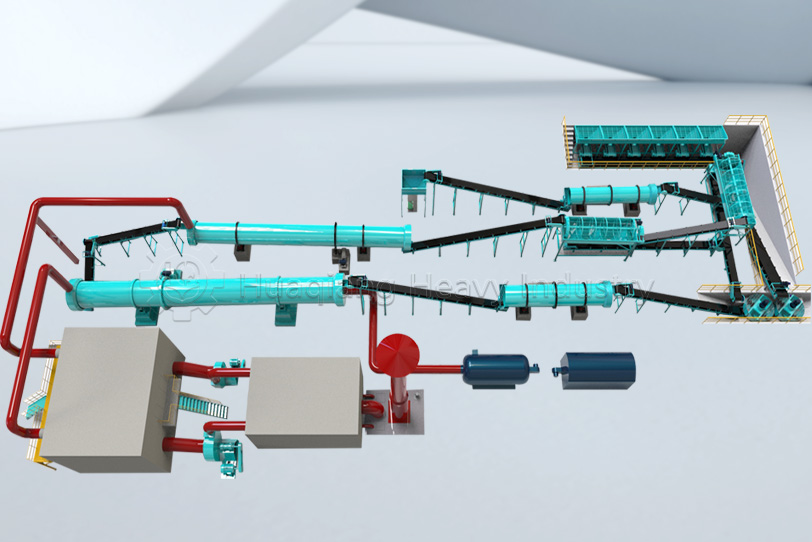NPK Fertilizer Manufacturing Process: How Are Raw Materials Transformed Into Perfect Pellets?
In modern agricultural production, efficient and high-quality fertilizers are key to ensuring bountiful crop harvests. The NPK fertilizer manufacturing process is the core technology that transforms various raw materials into effective compound fertilizers. This process is not only scientifically precise but also an art form. Let’s explore the secrets behind this remarkable transformation.
Precision Preparation: The Foundation of Quality Fertilizer
The first step in the NPK manufacturing process involves meticulous screening and pretreatment of base fertilizers. Each raw material is individually screened to ensure uniform particle size, then crushed to prepare for subsequent mixing. After screening, qualified materials are fed into corresponding hoppers. This step may seem simple but plays a decisive role in the quality of the final product.
Precise measurement is crucial for producing high-quality NPK fertilizers. According to formula requirements, each base fertilizer is accurately fed from its respective hopper into the feeding hopper through precision metering equipment, conveying equipment, and lifting equipment. Meanwhile, recycled materials also enter the feeding hopper together with the base fertilizers through lifting devices, achieving resource recycling.
Granulation Process: The Transformation From Powder to Pellets
In the NPK production process,granulation is the most critical step in the production of NPK fertilizers. The uniformly mixed materials enter the granulator at the specified feed rate, while saturated steam passes through the material layer, which not only increases the material temperature but also moistens it, creating optimal conditions for granulation.
Steam Conditioning
Appropriate steam passes through the material layer, increasing temperature and humidity to create an ideal environment for pellet formation.
Liquid Phase Control
When necessary, a small amount of water or fertilizer solution is sprayed to maintain the optimal liquid phase amount and ensure pellet quality.
Drum Action
The rotary drum granulator generates friction through rotation, forming uniform material pellets.
Pellet Movement
As the material rotates with the cylinder, the pellets slowly roll toward the outlet along the inclined direction, completing the forming process.
Finishing and Packaging: The Perfect Finish
After leaving the granulator, NPK fertilizer pellets are dried in a dryer, then screened, cooled, packaged, and stored. Throughout the npk fertilizer production process, unqualified particles are crushed and used as return material together with the screened powder, re-entering the granulation process to ensure zero waste and high efficiency.
As the core equipment in the NPK fertilizer manufacturing process, the rotary drum granulator is manufactured with special rubber lining or acid-resistant stainless steel lining, capable of handling various raw material combinations. Through processes involving steam, gas ammonia, or the addition of phosphoric acid, nitrogen solution, and other materials, efficient compound fertilizer granulation is achieved, ultimately producing uniform, efficient, and high-quality fertilizer products.
The entire npk production line embodies the technical essence of modern fertilizer production, perfectly combining scientific formulations with precision craftsmanship to provide reliable nutritional security for global agricultural production. From raw materials to finished products, each step is carefully designed and strictly controlled to ensure the final product can meet the needs of different crops and soils.
